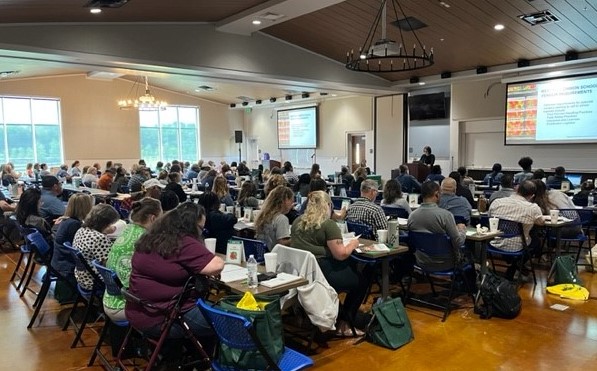Producer Resources

Selling to Schools
Incorporating local foods into Child Nutrition Programs enriches the connection that communities have to fresh and nutritious local foods. It also provides a stable and diversified market for producers of local food.
Explore resources designed to help you connect with Florida schools and learn about the procurement process.
Don’t see the resource you’re looking for?

Producer Trainings
Bringing the Farm to School trainings are intended for food producers interested in learning about selling food into local school markets. Trainings rotate throughout the state.
- Learn about accessing school markets, the procurement process and growing products for school markets.
- Hear from producers who have successfully navigated Farm to School markets.
- Gain new knowledge and resources for expanding your business to take advantage of school market opportunities.
What are local foods?
Local foods can be from any food group, including meats, eggs, grains, fruits, vegetables or dairy. Each school district sets its own definition for “locally grown or raised.”
This can range from items produced in the school’s county, within a certain mile radius of the school, in Florida or within an hour drive from the school.
The definition can range between products or even change with the season.

Can local meats be served in Child Nutrition Programs?
Yes. Livestock and poultry must be processed under federal inspection.
Can fresh chicken eggs be used in Child Nutrition Programs?
Yes. Eggs must meet requirements set by the Florida Department of Agriculture and Consumer Services.
Can local fruits and vegetables be served in Child Nutrition Programs?
Yes. Local produce can be purchased or donated directly from a farmer, or through a distributor, food hub, farmers’ market, grocer or school garden. Unprocessed fruits and vegetables that retain their inherent character are allowed. Minimal processing, such as freezing or cutting and bagging, is permitted.
Do producers need to be GAP certified to sell local produce to Child Nutrition Programs?
No. GAP (Good Agricultural Practices) certification is voluntary unless an individual school district requires it. Suppliers should follow these food safety practices and provide schools documentation of any farm food safety plans.
What paperwork is necessary to sell to Child Nutrition Program sponsors?
Information about traceability and price, along with food safety assurances and insurance coverage, are necessary when selling to schools.
What are the purchasing processes when selling to schools?
Schools can use three types of processes for purchasing food, depending on the amount they purchase:
- Micro-purchases may be used for purchases under $10,000 ($50,000 in some school districts) without obtaining multiple bids. Schools must distribute micro-purchases evenly amongst qualified vendors.
- Informal process may be used for purchases under $250,000; 3 quotes must be documented and evaluated before selecting the winning quote and making the purchase.
- Formal process is used for purchases over $250,000. Buyers prepare a solicitation, advertise the solicitation, and evaluate and award a contract to the lowest responsible bidder.
See how buyers target local foods using the USDA Decision Tree.
Donations are allowed and may be used for tax purposes. See A Farmer’s Guide to the Enhanced Federal Tax Deduction for Food Donation, available from the National Resource Defense Council.
